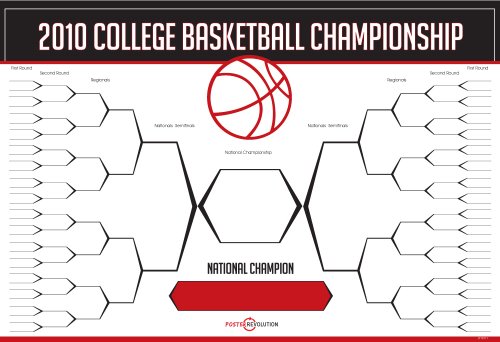This time last year, Web Watch shared some tips on how to pick a winning NCAA tournament bracket.
As basketball tournament madness rolls around again and everyone DOWNLOADS THE 2010 NCAA BRACKET, we thought we’d share some more tips with our Web Watch readers:
- ESPN covers bracketology with a set of tips that includes JUST PICK DUKE. Other sites, of course, are saying PICK DUKE, BUT DON’T PICK DUKE TO WIN IT ALL.
- No team ranked #11 or worse has ever made it to the Final Four.
- Upsets are good for making some advances in your bracket versus others. While we all know that a #1 team has never lost to a #16 team, here are some probabilities that you may want to pay attention to:
- The #1 seed has defeated the #16 seed 100%.
- The #2 seed has defeated the #15 seed 96%.
- The #3 seed has defeated the #14 seed 84%.
- The #4 seed has defeated the #13 seed 82%.
- The #5 seed has defeated the #12 seed 67% — meaning, that #12 wins 33% of the time.
- The #6 seed has defeated the #11 seed 69% — meaning that #11 wins 31% of the time.
- The #7 seed has defeated the #10 seed 62% — meaning that #10 wins 38% of the time.
- The #8 seed has defeated the #9 seed 46% — eh, it’s a 50/50 split. Make your best guess.
- You could go the easy route, and PICK ONLY NUMBER ONE AND NUMBER TWO SEEDS IN THE FIRST AND SECOND ROUNDS, but (remember to not pick any team with a nickname consisting of a profession, hobby, or activity you’ve never personally partaken in)
- You could RANK YOUR BRACKET TEAMS BASED ON THE SCHOOL’S ACADEMIC RANKING instead of their basketball success
- Mathematicians have determined that BASED ON PROBABILITIES, YOU ARE BETTER OFF PICKING ALL THE FAVORITES THAN YOU ARE PICKING UPSETS. Or, at the very least, not any worse off.
- Are any teams STREAKING OR SLUMPING in their conference runs? Or do they get HOME COURT ADVANTAGE by playing their regional tournament games close to home?
- Besides, once you’re looking at the ELITE EIGHT ROUND, IT ENDS UP THAT A TEAM’S ORIGINAL RANKING REALLY DOESN’T MATTER
- You could just take CBS’ MONEYWATCH’s list of things to do, including:
- Fill in your #1 seeds to win the first round, then pick the rest of the field based on the odds that Vegas bookmakers have set for the favorites. In other words, let the professionals do the heavy lifting for you
- Based on previous tournament statistics, the math says to pick your champion as either the 3rd or 4th-ranked #1 seed, or the 1st or 2nd ranked #2 seed. No need to pick an upset as your champion.
- Wait until the final day to submit your chart, because then you can look at what everyone else in the world picked on Yahoo, ESPN, CBS, or other large tournament sites. Use that research to go with the favorites
- Try using an online tool like the POOLOGIC CALCULATOR to determine what teams you should select, based on scoring criteria.
In other words, not much has changed since we covered bracketology last year – we just have more information at our disposal.
But the BEST WAY TO FILL OUT YOUR NCAA BRACKET is to use the LRMC system developed by Joel Sokol and Paul Kvam and Georgia Tech. Using sophisticated computer models based on previous games, they’ve been able to accurately predict the top bracket finishers for the past few years’ tournaments. This year, LRMC PREDICTS A FINAL FOUR OF Kansas, Duke, Syracuse, and West Virginia… with the final game between Kansas and Duke going to Duke.
And if you are having trouble watching NCAA basketball at work, you could always try using your cell phone. SPRINT and ESPN announced a partnership allowing some Sprint customers to receive live ESPN television coverage of 23 men’s and 19 women’s NCAA basketball games (including the Big 12 and Big East conference championships) right on their cell phones.

